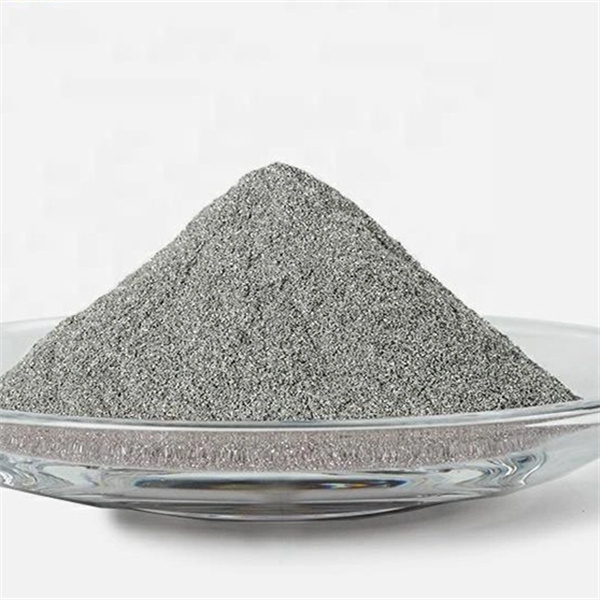选择性激光熔融 (SLM) 是一种金属快速成型制造工艺,它使用激光将金属粉末熔融成完全致密的部件。本指南介绍了 SLM 技术、系统、材料、应用、优点以及使用 SLM 实施快速成型制造时的注意事项。
介绍 快速成型制造 SLM
选择性激光熔融(SLM)是一种粉末床熔融快速成型制造技术,它利用高功率激光逐层选择性地熔化和融合金属粉末颗粒,直接根据 CAD 数据制造出完全致密的三维零件。
可持续土地管理技术的关键属性:
- 使用聚焦激光束熔化金属粉末
- 每层只在需要的地方添加材料
- 可实现铸造或机加工无法实现的复杂几何形状
- 制造出高密度的近净形金属部件
- 材料包括铝、钛、不锈钢、合金
- 中小型零件制造量
- 复杂、小批量零件的理想选择
- 无需模具等硬质工具
- 与减法相比,可大大减少浪费
- 实现轻量化设计和部件整合
- 允许利用工程结构改善功能
SLM 凭借其强大的功能,为创新产品设计和精益生产带来了改变游戏规则的好处。然而,掌握这一过程需要专业知识。
SLM 快速成型制造的工作原理
可持续土地管理生产流程包括
- 在构建板上铺展并平整一薄层金属粉末
- 选择性扫描聚焦激光束以熔化粉末
- 降低建造平台,重复分层和熔化
- 从粉末床中取出已完成的部件
- 根据需要对零件进行后处理--清理、热处理等。
精确控制激光、扫描模式、腔室气氛和其他参数,是利用 SLM 实现高质量、高密度金属零件的关键。
SLM 系统包括激光发生器、光束传输光学系统、粉末传输系统、构建室、惰性气体处理和中央控制装置。性能在很大程度上取决于系统工程和构建参数的调整。

SLM 设备制造商
SLM 快速成型制造系统的全球领先供应商包括
| 公司名称 | 机型 | 建筑尺寸范围 | 材料 | 价格范围 |
|---|---|---|---|---|
| SLM 解决方案 | 下一代, NXG XII | 250 x 250 x 300 毫米 <br>500 x 280 x 365 毫米 | 钛、铝、镍、钢 | $400k - $1.5M |
| EOS | M 300、M 400 | 250 x 250 x 325 毫米 <br> 340 x 340 x 600 毫米 | 钛、铝、镍、铜、钢、钴铬合金 | $500k - $1.5M |
| Trumpf | TruPrint 3000 | 250 x 250 x 300 毫米 <br> 500 x 280 x 365 毫米 | 钛、铝、镍、铜、钢 | $400k - $1M |
| 概念激光器 | X 线 2000R | 800 x 400 x 500 毫米 | 钛、铝、镍、钢、钴铬合金 | $1M+ |
| 雷尼绍 | AM400, AM500 | 250 x 250 x 350 毫米 <br>395 x 195 x 375 毫米 | 钛、铝、钢、钴铬合金、铜 | $500k - $800k |
系统选择取决于制造尺寸需求、材料、质量、成本和服务支持。建议与经验丰富的 SLM 解决方案提供商合作,以正确评估各种选项。
SLM 工艺特点
SLM 涉及各种工艺参数之间复杂的相互作用。以下是其主要特点:
激光 - 功率、波长、模式、扫描速度、舱口间距、策略
粉末 - 材料、颗粒大小、形状、进料速度、密度、流动性、重复利用率
温度 - 预热、熔化、冷却、热应力
氛围 - 惰性气体类型、氧气含量、流速
构建板 - 材料、温度、涂层
扫描策略 - 填充图案、旋转、边框轮廓
支持 - 最小化、界面、移除
后期处理 - 热处理、HIP、机加工、精加工
了解这些参数之间的关系对于实现具有优化机械性能的无缺陷零件至关重要。
可持续土地管理部件设计指南
正确的零件设计是 SLM 快速成型制造成功的关键:
- 设计时考虑 AM 原理与传统方法
- 优化几何形状,减轻重量、减少材料用量、提高性能
- 使用自支撑角钢,尽量减少对支撑物的需求
- 在设计中允许支持界面区域
- 确定部件的方向,以减少应力和避免缺陷
- 考虑特征中的热收缩效应
- 设计用于清除未熔化粉末的内部通道
- 解决悬臂或薄截面可能出现的翘曲问题
- 设计表面光洁度时考虑到竣工时的粗糙度
- 考虑层线对疲劳性能的影响
- 设计用于从粉末床取出部件的夹具接口
- 尽量减少未烧结粉末的滞留量
模拟软件有助于在打印前评估复杂 SLM 零件的应力和变形。
SLM 材料选项
SLM 技术可加工各种合金,最终材料性能取决于各种参数:
| 类别 | 普通合金 |
|---|---|
| 钛 | Ti-6Al-4V, Ti 6242, TiAl, Ti-5553 |
| 铝质 | AlSi10Mg、AlSi12、Scalmalloy |
| 不锈钢 | 316L、17-4PH、304L、4140 |
| 工具钢 | H13、马氏体时效钢、铜工具钢 |
| 镍合金 | 铬镍铁合金 625、718、海恩 282 |
| 钴铬合金 | 钴铬钼合金、MP1、钴铬钨合金 |
| 贵金属 | 金、银 |
选择兼容的合金并调试合格的制造参数对于实现所需的材料性能至关重要。
关键 SLM 应用
可持续土地管理实现了各行各业的转型能力:
| 行业 | 典型 SLM 应用 |
|---|---|
| 航空航天 | 涡轮叶片、叶轮、无人机部件 |
| 医疗 | 骨科植入物、手术工具、病人专用器械 |
| 汽车 | 组件轻量化、定制工具 |
| 能源 | 复杂的油气阀门、热交换器 |
| 工业 | 共形冷却刀片、夹具、固定装置、导轨 |
| 国防 | 无人机、枪械、车辆和防弹衣组件 |
与传统制造相比,其优势包括
- 大规模定制能力
- 缩短开发时间
- 自由设计,提高性能
- 部件合并和轻量化
- 消除过度使用材料的现象
- 供应链整合
在关键应用中使用 SLM 零件时,需要对机械性能进行仔细验证。
的利弊 SLM 快速成型制造
优势
- 通过快速成型工艺实现设计自由
- 在不增加成本的情况下实现复杂性
- 无需模具等硬质工具
- 将子组件合并为单一组件
- 从有机拓扑优化结构中实现轻量化
- 定制和小批量生产
- 与铸造/机加工相比,开发时间更短
- 精细微结构带来高强度重量比
- 与减法工艺相比,可大大减少材料浪费
- 及时生产和分散生产
- 减少部件交付周期和库存
局限性:
- 与其他金属 AM 工艺相比,制造量更小
- 精度和表面光洁度低于 CNC 加工
- 与铸造相比,合格合金的选择有限
- 通过大量试错来优化构建参数
- 逐层堆积产生的各向异性材料特性
- 残余应力和开裂缺陷的可能性
- 复杂内部几何形状的除粉难题
- 通常需要进行后处理才能获得最终特性
- 设备成本高于聚合物三维打印
- 需要特殊设施和惰性气体处理
如果应用得当,可持续土地管理可实现其他手段无法实现的突破性性能。
实施 SLM 快速成型制造
采用可持续土地管理技术的关键步骤包括
- 根据需求确定合适的应用程序
- 确认所选设计的可持续土地管理可行性
- 制定严格的工艺鉴定协议
- 投资合适的 SLM 设备
- 确保金属粉末床工艺的专业性
- 建立严格的材料质量程序
- 掌握参数开发和优化
- 实施稳健的后处理方法
- 鉴定成品部件的机械性能
在添加 SLM 添加剂功能时,有条不紊地实施以低风险应用为重点的引入计划,可最大限度地减少陷阱。与经验丰富的 SLM 服务局或系统原始设备制造商合作,可以获得专业知识。
SLM 生产成本分析
可持续土地管理生产的经济性涉及
- 机器设备成本高
- 构建设置、后期处理和质量控制所需的人工
- 合适金属粉末原料的材料成本
- 零件精加工--机加工、钻孔、去毛刺等。
- 间接费用 - 设施、惰性气体、维护
- 初步试错流程开发
- 成本随着生产经验和产量的增加而降低
- 在产量约为 1-500 台时变得经济实惠
- 为复杂几何形状提供最高成本优势
建议从信誉良好的供应商处选择合格的合金,以防止出现缺陷。与服务供应商合作可提供更快、更低风险的采用途径。
SLM 与其他工艺的比较
| 过程 | 与 SLM 的比较 |
|---|---|
| 数控加工 | SLM 可加工减法工艺无法加工的复杂形状。无需硬模具。 |
| 金属注射成型 | SLM 没有高昂的模具成本。材料性能优于 MIM。 |
| 压铸 | SLM 的模具成本更低。没有尺寸限制。可实现非常复杂的几何形状。 |
| 板材层压 | 与层压复合材料相比,SLM 可制造出完全致密且各向同性的材料。 |
| 粘结剂喷射 | 与需要烧结的多孔粘合剂喷射部件相比,SLM 可制造出完全致密的绿色部件。 |
| DMLS | 与聚合物 DMLS 相比,SLM 具有更高的精度和更好的材料特性。 |
| EBM | 与 SLM 相比,电子束熔化的制造率更高,但分辨率较低。 |
根据应用要求、批量大小、材料和性能需要,每种工艺都具有特定的优势。
SLM 快速成型技术的未来展望
可持续土地管理将在未来几年实现大幅增长,其驱动因素包括
- 不断扩大材料范围,提供更多合金
- 建造量更大,可实现工业规模生产
- 表面光洁度提高,公差更小
- 提高系统可靠性和生产率
- 集成数控加工的新型混合系统
- 成本下降提高了业务可行性
- 进一步优化算法和模拟
- 自动支持移除和后处理
- 监管行业合格部件的增长
- 继续推进高复杂性设计
可持续土地管理将成为主流,其应用范围将不断扩大,其能力将带来明显的竞争优势。

常见问题
使用 SLM 技术可以加工哪些材料?
通常加工钛、铝、不锈钢、工具钢、镍合金和钴铬。
SLM 有多精确?
典型的精度约为±0.1-0.2%,最小特征分辨率约为 100 微米。
SLM 系统的成本是多少?
SLM 设备的价格从 $300,000 到 $1,000,000+ 不等,具体取决于尺寸、功能和选件。
需要进行哪些类型的后期处理?
可采用热处理、HIP、表面精加工和/或机加工。还需要去除支撑物。
哪些行业使用 SLM 快速成型技术?
航空航天、医疗、汽车、工业和国防部门是 SLM 的早期采用者。
SLM 对哪些材料效果不佳?
铜或金等高反射金属仍然具有挑战性。某些合金的材料特性仍在形成中。
可以实现哪些表面处理?
SLM 制造后的表面粗糙度为 5-15 微米 Ra。精加工可进一步改善这一状况。
SLM 能制造多大的零件?
标准制造体积可达 500mm x 500mm x 500mm。更大的机器可容纳更大的部件。
SLM 是否适用于最终用途的生产部件?
是的,SLM 越来越多地用于最终生产部件,例如航空航天和医疗行业。
